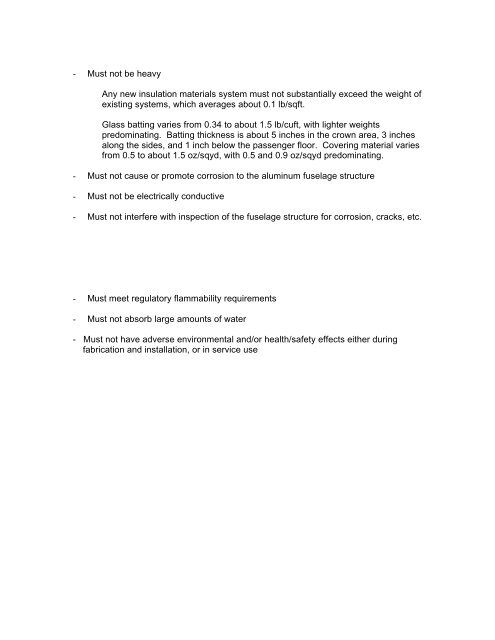Aircraft Thermal/Acoustic Insulation Materials Functions and ...
Aircraft Thermal/Acoustic Insulation Materials Functions and ...
Aircraft Thermal/Acoustic Insulation Materials Functions and ...
You also want an ePaper? Increase the reach of your titles
YUMPU automatically turns print PDFs into web optimized ePapers that Google loves.
- Must not be heavy<br />
Any new insulation materials system must not substantially exceed the weight of<br />
existing systems, which averages about 0.1 lb/sqft.<br />
Glass batting varies from 0.34 to about 1.5 lb/cuft, with lighter weights<br />
predominating. Batting thickness is about 5 inches in the crown area, 3 inches<br />
along the sides, <strong>and</strong> 1 inch below the passenger floor. Covering material varies<br />
from 0.5 to about 1.5 oz/sqyd, with 0.5 <strong>and</strong> 0.9 oz/sqyd predominating.<br />
- Must not cause or promote corrosion to the aluminum fuselage structure<br />
- Must not be electrically conductive<br />
- Must not interfere with inspection of the fuselage structure for corrosion, cracks, etc.<br />
- Must meet regulatory flammability requirements<br />
- Must not absorb large amounts of water<br />
- Must not have adverse environmental <strong>and</strong>/or health/safety effects either during<br />
fabrication <strong>and</strong> installation, or in service use
















